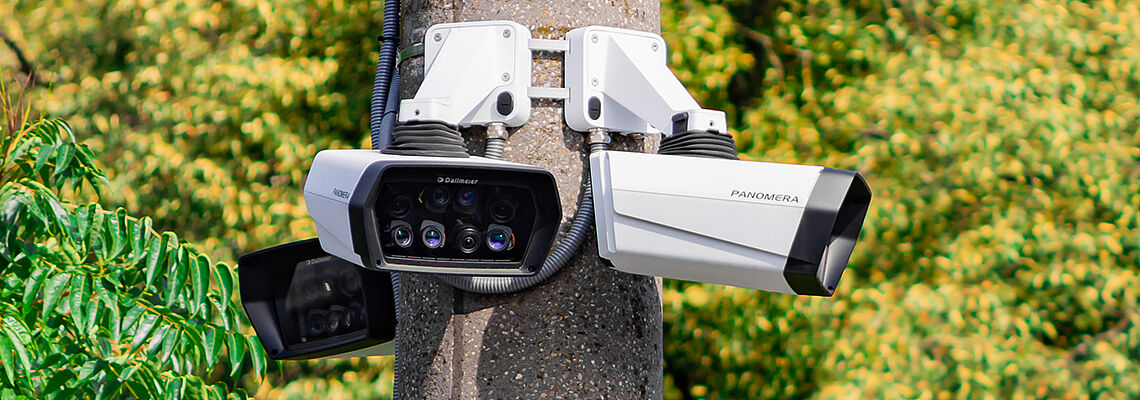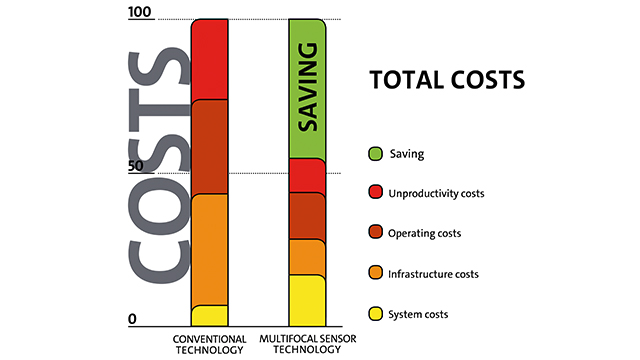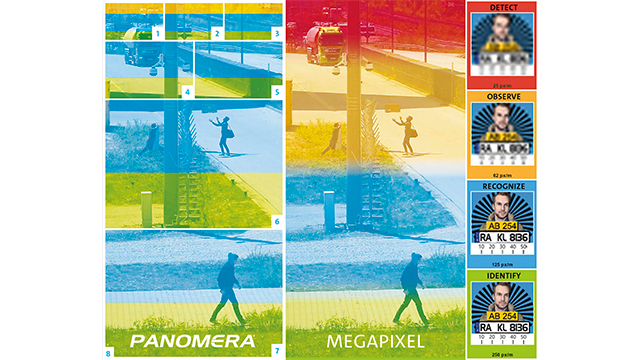Newsletter
Exclusive expert tips, customer stories and more.

The video security technology market is in a state of constant flux. Today, the attention of the industry is trained on added values beyond pure image capture. These include for example the analysis techniques based on Computer Vision, which users can use to optimise not only security issues but also business processes. From just a cost factor, video technology is increasingly becoming a “business enabler“, that is to say a precursor to successful commercial activity and new fields of business. And this in turn places the matter of the overall costs of operating a system firmly at the centre of deliberations. For this reason, any company is well advised not to lose sight of the “Total Cost of Ownership“ (TCO), or be distracted by apparently low-priced single components.
Whether in private life or in the B2B area, the same principle applies: Just because a product is inexpensive, this does not necessarily mean it is also economical to operate. A “Total Cost of Ownership“ analysis helps to take into consideration the lifecycle of a total video security solution with all associated costs, including the costs of planning, installing and operating all involved components. Many users then discover to their astonishment that the number of cameras needed has much further implications, way beyond the costs of procuring the individual components, but also a whole range of subsequent costs.
All video security solutions are different. For example, the requirements that must be met in indoor surveillance in a logistics building are quite different from those which must be satisfied for city surveillance, for instance. Yet despite the wide variety of options, the same requirements occur time and time again: expanses or distances must be monitored, and at a specified resolution depending on the application, which must be maintained. This resolution density is defined in “Pixel per meter” within the standard DIN EN 62676-4. For example, 250 pixels per metre (px/m) are required for identifying unknown persons; on the other hand, e.g., 62.5 px/m are normally sufficient for classifying objects such as people or vehicles. In this respect, megapixel and multisensor cameras as well as PTZs are confronted with a challenge: During zoom actions, megapixel and multisensor cameras do not usually offer court-proof resolution in the middle- and long-distance image areas – or a prohibitively large number of them must be installed or a lot of megapixel – and thus money is “wasted” in the foreground. In the case of PTZ systems, the operator loses the overview of the scene as a whole and thus the images are typically not usable for court-proof surveillance as such.

Problems of a similar nature are encountered with analysis applications: Since resolution decreases drastically as depth increases in megapixel or multisensor systems, the result of any analysis is the highly variable data quality for the various regions of an object space. For their part, PTZ systems are by definition unsuitable for analysis, as they are constantly in motion and the subregions of the object space they capture are always changing. In keeping with the data processing principle “Garbage In – Garbage Out“, analysis of a video image is only ever as good as the quality of the input data. It follows that in order to be able to carry out meaningful video analysis, the essential criterion is a minimum resolution, which is ideally definable and has been adjusted individually to the respective application as early as the planning phase.
Multifocal sensor systems (MFS) address the optical dilemma of resolution that diminishes as depth or distance increases. They do so by combining multiple sensors with lenses having different focal lengths, thereby enabling a high-resolution monitoring and recording of the entire object space, including the most distant image regions. In this way, a minimal number of camera systems is sufficient to assure the required consistent minimum resolution density even over large expanses or long distances. Thus, MFS technology provides the most economic foundation for targeted video surveillance or observation and reliable analysis results. For example, the 8,800 square metres of the pedestrian area in front of Cologne cathedral are monitored in a resolution that is usable in a court of law (>250 px/m) using just eight camera systems. Stadium operators can capture as many as 20,000 seats with one system, at airports take-off and landing runways up to four kilometres long are monitored with one multifocal sensor system “pair“.
Depending on the application area, a single multifocal sensor system can replace up to 24 single sensor cameras. And fewer systems also mean less infrastructure, e.g., cables and masts, and less installation time or excavation work. Another cost-saving effect is realised since significantly fewer monitors are needed for video observation. Based on the usual values – one well trained operator for six to a maximum of eight screens at once – the savings potential in terms of operating costs and significantly better monitoring quality is clearly evident. Thanks to the considerably improved total overview afforded by multifocal sensor technology, one security employee can also keep watch over even extremely large relationships without difficulty. Furthermore, besides infrastructure and personnel costs the number of cameras is also significant for many other cost blocks, such as support and maintenance.

But the cost efficiency of a video security system is determined not only by the costs of procuring and maintaining the hardware. The underlying software is another significant contributory factor. Here, help comes in the form of modular systems and platform approaches for which the customer only has to license the components he actually needs, but which are open and extendable enough to enable them to be upgraded in line with changing requirements. Solution modules for specific sectors optimise the implementation of the respective software platform. In this context, capabilities range from instantaneous, automatic measurement of packages in logistics to the avoidance of false alarms in perimeter surveillance through AI-based object classification and on to many further analysis options such as counting people, vehicles and parking spaces, or intrusion, line crossing or loitering detection. Good systems are also equipped with additional elements such as cards with “Active Objects“ or even functions for effective processing of the captured data, such as electronic incident management. Besides the above, interfaces with all major systems for security and building information, such as access controls, fire or intruder alarm systems, are also important. Whatever the application, this is how modular video management systems support the economical operation of video security technology.
Data protection and data security are essential cost efficiency factors – not only in video security systems. The penalties for GDPR violations nowadays are painful, quite apart from the cost incurred through lost data and industrial espionage. Like any other networked system or IoT device, modern video security systems also represent potential points of attack and must be protected appropriately. Decision makers are therefore well advised to consider the principles of “Privacy and Security by Design“ enshrined in the GDPR. Last but not least, a manufacturer's country of origin and production can certainly play a significant part in this – whether they are inadvertently or deliberately constructed “backdoors“, transparent quality assurance, vertical development and manufacturing or the preclusion of political influence. In this context, the label “Made in Germany“ or “Made in Europe“ would seem to acquire greater significance again.
Even though alternative technologies such as multifocal sensor systems may seem more expensive at first glance when broken down to the individual system, their implementation entails often significantly lower infrastructure and operating costs, and at the same time they help their users to achieve security and business objectives more effectively. So, in the video surveillance market as well, instead of asking the manufacturer or installer the tired old question of how much the camera costs, it is worth doing a detailed calculation, and in particular bearing in mind what purpose the system is actually intended to achieve. Because it is equally true in the video security industry: “If you buy cheaply, you will pay dearly!“ Or in economical terms: The cost efficiency of a system is calculated as its yield or performance divided by its cost or price.